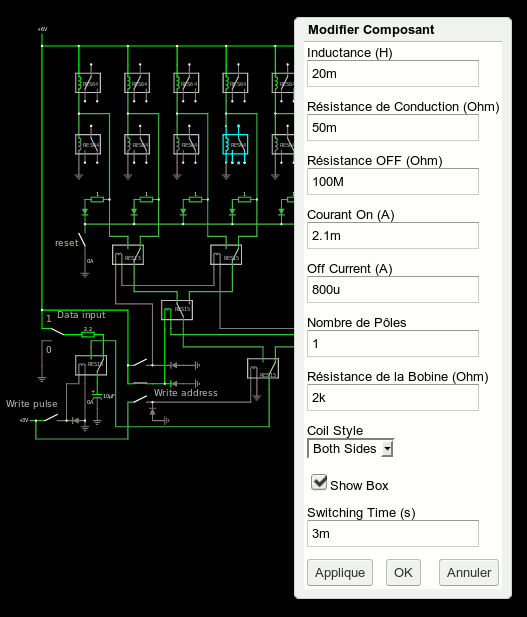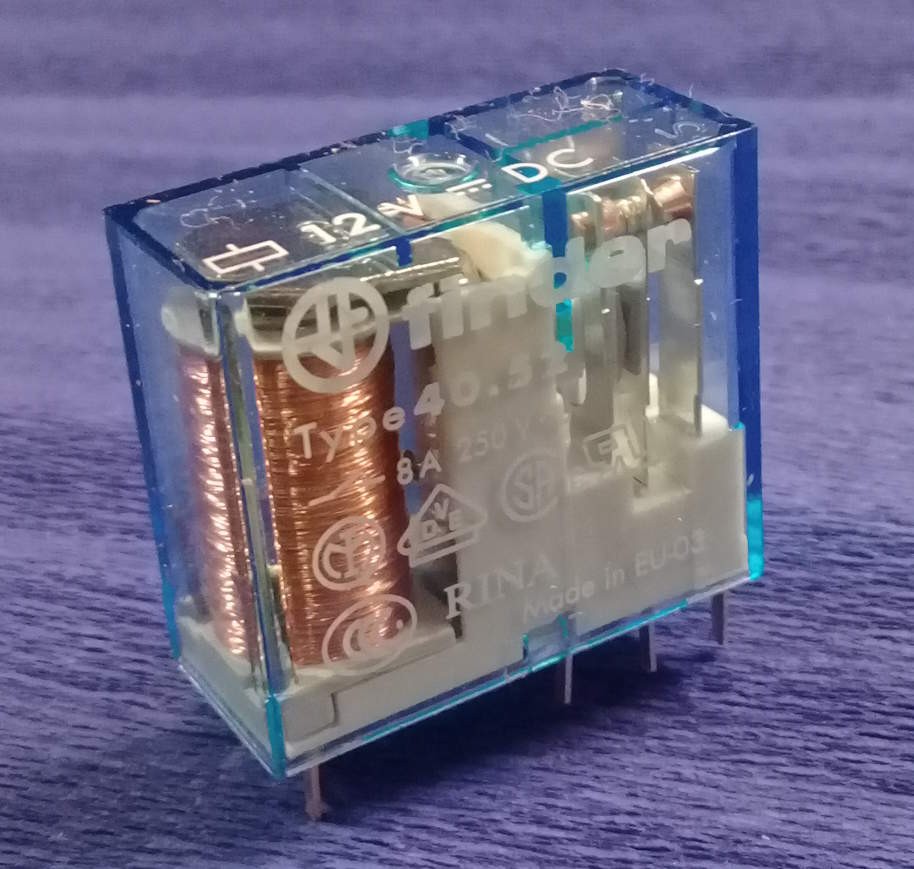While discussing with Paul Falstad about a new feature of circuitjs, came the question of which default parameter to propose to the users.

For basic simulations, the contact's resistances can be pushed to the limits (on: 1m Ohm - off: 1G Ohm) because this does not affect the results much. Beware however because you'll get nanoamperes of leakage here and there.
I like how you can configure the number of poles, the position of the coil, the appearance of the box, but there are more critical parameters. And we're back to the question: "what is a typical relay ?" There are so many types, sorts, models, brands, uses and characteristics that we can't tell what the user has in mind. But while exploring my parts bins, I found a good candidate that is an interesting compromise:

The Finder type 40-52 is an average size, mains-capable DPDT relay so it's a good basis. Someone might want to integrate one or a few to control mains-powered devices with a microcontroller, for example I suppose that most circuitjs users will not consider AC-driven coils (which it doesn't handle).
Rated at 12V, the coil resistance is about 200 ohms. I have 5 of them so here are the measured values :
208 211 211 205 207
Inductance is about a third of a Henry:
0.359H 0.362H 0.371H 0.364H 0.365H
I also tested one unit :
Von: 7.15V Ion: 33mA Voff: 2.2V Ioff: 10mA
Note that this is only one unit and the values move with temperature, which also depends on self-heating, meaning that the above values will drift a bit if left powered.
Also note that each contact can handle 8A of 220Vac so the magnetic circuits is pretty solid, with a strong spring, which also creates a high hysteresis and draws more current to action the contact.
-------------------------------------------------------------------------------------
I also found a small bag of smaller relays (1/3 the volume of the above type), still 12V but PCB-mount and can only handle 1Aac (so we can expect a softer spring). The coils average 720 ohms within some percents but the inductances are less clustered: 0.663H 0.619H 0.544H 0.675H 0.620H 0.656H 0.565H
(one unit/sample only) Ion: 9.7mA Von: 7.15V Ioff: 12mA Voff: 1.45V
Whereas a similarly-rated but 5V only version has only 28mH and 122 ohms
-------------------------------------------------------------------------------------
So no, there is no "typical" relay just as there are no typical resistors or capacitors... At this point, it doesn't make sense to sample all my parts, but the above two references are "reasonable", as they are not guesses.
And concerning the switching time, I'll simply quote Paul:
I will change the switching time to 5ms. it's working great.
This parameter is useful in the context of the whole circuit but all the bounces and affecting conditions make this parameter almost irrelevant at this level of simulation. Bounces can have very complex patterns, the inductor will slow the rise of the current and delay the magnetism, oh and the speed might also be affected by the input current's slope so it is waaayyyy simpler to just give an approximate delay. @matseng has explored this with #ReTest - Relay timing tester and this is "another can of worms", as shown in an old log:

So this log does not answer the initial question but brings some interesting data to the debate :-)
 Yann Guidon / YGDES
Yann Guidon / YGDES
Discussions
Become a Hackaday.io Member
Create an account to leave a comment. Already have an account? Log In.